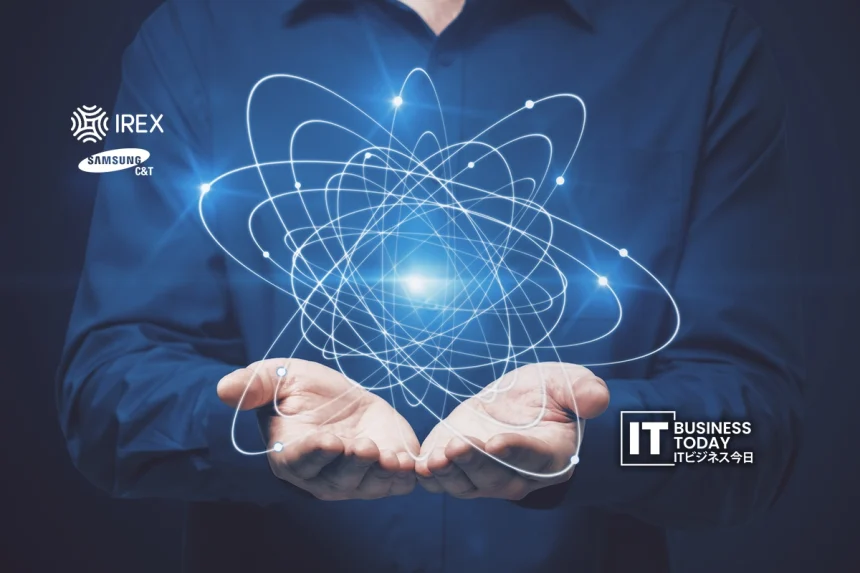韓国のコングロマリットであるサムスンC&Tは、日本の再生可能エネルギー企業である株式会社アイレックスと戦略的合弁事業に投資し、日本における大規模な蓄電システムプロジェクトを開発する予定です。発表によると、この折半出資の合弁会社は、まずグリッドで使用される約20メガワット以上の規模のプロジェクトを追求し、再生可能エネルギーへの移行を加速する日本のESS需要の高まりに対応する予定。.
このイニシアチブの発表は、日本の国家エネルギー目標を背景にしたものです。この目標は、再生可能エネルギーによる発電の割合を、現在の22-24 %から、2030年までに36-38 %に引き上げることを目標としています。.
また、アイレックス社が宮崎県串間市で開発中の2,000kW(2MW)規模のESSプロジェクトにも出資します。.
こちらもお読みください: 日本、原子炉20基分のソーラー・スーパーパネルを発表
日本のテクノロジーと産業のエコシステムにとって重要な理由
このニュースは公益事業やエネルギー・インフラが中心ですが、日本のハイテク産業や日本で事業を展開する企業にも強い影響を与えます。.
技術ハードウェアとシステムの新たな成長エンジンとしてのESS
蓄電システムには、バッテリー、パワーエレクトロニクス、制御システム、監視ソフトウェア、HVAC、熱管理などのコンポーネントと、グリッドディスパッチプラットフォームとの統合が必要です。バッテリー・モジュール・メーカー、インバーター/PCS(電力変換システム)サプライヤー、エネルギー管理ソフトウェア・ベンダーといった日本のハイテク企業にとって、この合弁事業は新たな大きなチャンスをもたらすものです。大規模なESSプロジェクトが始まれば、これらのコンポーネントやシステムに対する需要が日本で高まるでしょう。.
デジタルスタックのアップグレード - ハードウェアからスマートグリッドソフトウェアまで
ESSの導入は、ハードウェアだけでなく、分析、遠隔監視、予知保全、グリッド統合制御のためのソフトウェアへの依存度が高まっています。日本の送電網がよりダイナミックになり、再生可能エネルギー比率の上昇、分散型発電の増加、需要側管理の強化が進むにつれ、IoT、クラウド/エッジインフラ、AIベースのオペレーション、エネルギー・データ・プラットフォームを専門とする企業にビジネスチャンスが訪れるでしょう。これはまた、日本のハイテク産業が、純粋なハードウェア中心から、フルシステム+サービスへとシフトしていることを示すものでもあります。.
国内サプライチェーンの強化と輸出の可能性
日本は伝統的にパワーエレクトロニクスとバッテリーに強く、この動きはESS分野での国内プレイヤーの地位を固めるのに役立ちます。日本のサプライヤーがこれらの大規模プロジェクトで勝利を収めれば、アジア太平洋、北米、欧州に輸出可能なシステムを構築し、世界のクリーンエネルギー技術における日本の地位を高めることができるかもしれません。サムスンC&Tの協力は、日本企業が韓国や多国籍企業と提携することを可能にする国境を越えたサプライチェーン提携を促進する可能性もある。.
産業および規制への影響
これは、日本の技術・エネルギー分野で事業を展開する企業にとって、今後ますます多くのエネルギー転換プロジェクトが技術導入と連動していくことを示すものです。規制当局は、グリッド統合のルール、蓄電に関するインセンティブ、バッテリーシステムの安全性と認証に対応しなければなりません。テック企業は、このような進化する基準に適合した製品を開発することが求められます。.
同分野で事業を展開する企業への影響
日本の様々なタイプの企業がどのような影響を受けるかをご紹介します:
電池・エネルギー貯蔵機器メーカー:モジュールメーカー、システムインテグレーター、サービス企業にとって、規模の拡大が期待できます。.
パワーエレクトロニクスおよびコンバータ/インバータ企業:ESSの増加に伴い、ハイパワーインバーターやコンバーター、サーマルシステムの需要も増加するでしょう。パワーエレクトロニクスに強みを持つ日本企業は、このトレンドを活用することができます。.
ソフトウェア、分析、グリッド統合企業:エネルギー管理プラットフォーム、配車最適化、予知保全、IoT接続を提供する企業が新たなビジネスを展開するでしょう。合弁プロジェクトでは、このようなシステムが必要になるでしょう。.
中小企業および新興企業:ニッチなセンサー技術、熱モニタリング、ソフトウェア・モジュール、グリッド分析に特化した小規模な技術企業は、サムスンC&T/IREXのような大手企業との新たなパートナーシップを築き、より大規模なプロジェクト環境にアクセスできるようになるかもしれません。.
電力会社および送電網運営会社:電力会社は、再生可能エネルギーからの出力を管理し、需給のバランスをとり、抑制を減らし、一般的により柔軟な送電網の運用ができるようになるため、やや川下ではありますが、恩恵を受けるでしょう。電力会社に製品を供給している日本のハイテク企業は、自社製品に対する需要が増加するでしょう。.
課題と戦略的考察
ビジネスチャンスは明らかですが、企業はいくつかの課題を乗り越えなければなりません:
コストと規模の経済性: ESSプロジェクトは経済的であるべきです。バッテリーは老朽化し、パワーエレクトロニクスはライフサイクルコスト管理が必要で、投資収益率は使用量に依存します(グリッドサービス、裁定取引、再生可能エネルギーのバランシング)。技術プレーヤーは、競争力のある総所有コストを提供しなければなりません。.
レガシーグリッドシステムとの統合:ESSの大規模な導入には、規制の適応と電力会社の協力が必要かもしれません。.
安全性、認証、ライフサイクル管理: 貯蔵システム、特に大型のものは、火災のリスクや熱暴走の問題があります。日本の技術企業は、非常に厳しい安全基準を満たし、監視とメンテナンス体制を構築し、長期的なサポートを提供しなければなりません。.
グローバルな競争と技術の進歩: ほとんどの国が、電池化学、超高速応答、寿命改善など、ESSとストレージの技術革新を推進しています。日本企業はリーダーシップを失わないために、イノベーションに投資する必要があります。.
事業収益モデル:ESSビジネスに参入する多くの企業にとって、グリッド・サービス契約、エネルギー裁定取引、再生可能エネルギーの統合など、適切な利用モデルを特定することは非常に重要です。また、技術ベンダーは、単にハードウェアを供給するだけでなく、ビジネス・モデリングをサポートする必要があります。.
結論
の合弁会社。 サムスンC&T / アイレックス は、日本のエネルギー技術の旅路における重要な変曲点を示しています。大規模なエネルギー貯蔵システムは、単なるユーティリティ・インフラではなく、ハードウェア、ソフトウェア、システム、サービスに非常に重要な意味を持つ技術展開であることを示しています。バッテリー・モジュール・メーカーからグリッド分析ソフトウェア企業に至るまで、日本のハイテク企業にとって、これは全く新しい成長の地平を示唆しています。日本が再生可能エネルギーへの移行に本腰を入れる中、このトレンドに沿い、ESS対応技術に投資し、サプライチェーン全体で提携し、グリッド統合の革新に取り組む企業が、その価値を獲得する可能性が高いでしょう。.







